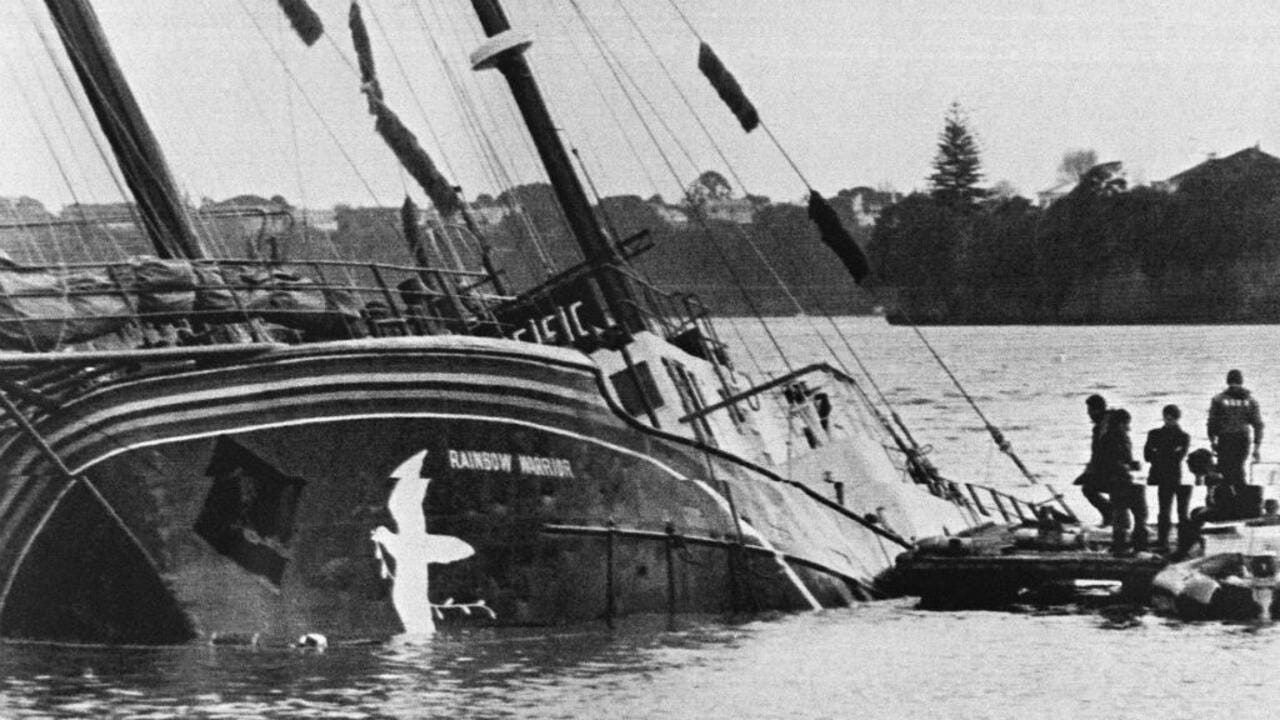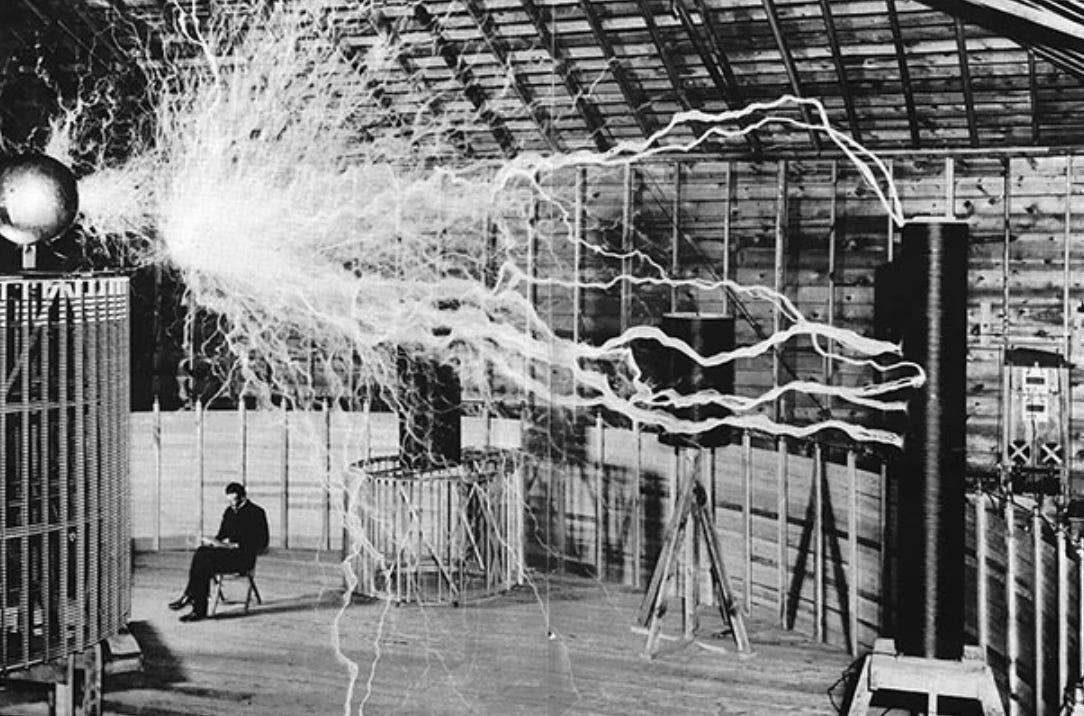Part 2: The Man Who Wired The Atlantic
Friesland, ITV, The Rainbow Warrior, Tesla, and Marcus Aurelius
BOC#038
5 MINUTE MUNCH
TITLE PIECE: PART 2: THE MAN WHO WIRED THE ATLANTIC
Last week we explored the fascinating story of Cyrus Field and his ultra-ambitious plan to link North America to Europe by way of an extensive telegraph cable laid across two thousand miles of seabed. In 1858, after three failed attempts, the first transatlantic messages were finally transmitted between Newfoundland and Ireland, leading to celebrations and delight on both sides of the Atlantic.
The project’s success had thus far seen 366 readable messages transmitted across the Atlantic in a single month. But having only enjoyed the bounties of their enduring efforts for a number of weeks, on 1 September 1858, the cable fell silent….
1859 - 1865
With communications down and Civil War looming in the United States, the British government did what they do best. They commissioned a committee of experts, engineers and scientists to investigate what had gone wrong while temporarily halting their support for the project.
By July 1863, the committee had concluded an optimistic outlook for the project with a series of suggested improvements that would promise prolonged success going forward. With a newfound optimism, Cyrus Field left the Civil War behind and returned to England where he’d set out to secure new investment. Having struck a deal with the Telegraph Construction and Maintenance Company as well as the railway tycoon Thomas Brassey, the project was almost ready to resume.
All that was needed now was a new ship which came in the form of the SS Great Eastern; a huge vessel built by Isambard Kingdom Brunel. The ship offered more than five times the displacement tonnage of any other ship of the day (it would take another forty years for a bigger ship to be built).
By 1865, she was loaded and ready to set sail. 500 crew, 7,000 tonnes of cable, 2,000 tonnes of water tanks and 1,500 tonnes of coal departed on June 24 1865.
As might be expected by now, the ship ran into trouble almost immediately as a scrambling crew hastened to investigate a noise resembling a thunderbolt. Having frustratingly retraced much mileage, copious painstaking hours of cable retrieval ensued.
On 2 August, things suddenly took a turn for the worse yet again as a sudden change in course saw an iron protrusion on deck sever the cable while the ship was just six hundred miles away from Newfoundland’s shores. The crew would spend the next nine-days trying to recover the cable using a grapnel anchor, but, you guessed it, the grapnel snapped and the mission had to be aborted once more.
After so many failed attempts, Cyrus feared his British counterparts would seek to terminate the project, but he needn’t have worried. His investors, seeing how close the project was to success, pushed on with unwavering enthusiasm. Terms were renewed ahead of yet another voyage the following summer.
1866
On July 13 1866 the SS Great Eastern once again departed Valentia Island for Newfoundland, and without much ado, arrived at Heart’s Content on July 27 with the cable having been successfully laid. As before, Cyrus coupled the cable and eagerly rowed to shore where he sent an initial message to his wife which read: ‘All well. Thank God the cable is laid and is in perfect working order’.
Celebrations once again ensued as messages were exchanged between President Andrew Johnson and Queen Victoria.
Following this great feat, Field and his crew retraced their previous failed voyage fishing up old cable and feeding it back to Nova Scotia. The joy of two successful voyages after much perseverance led Cyrus to enter his cabin, lock the door, and cry ‘like a child…full of gratitude to God’.
Their progress had been gargantuan. Initial messages sent in 1858 had taken sixteen hours to transmit, but by 1866, the same messages were carried in seven minutes. Transmission rates eventually rose to 7.36 words a minute, delivering some 1,000 messages a month.
In 1866 Paul Julius Reuter went on to lay more cable, connecting Germany to England, and France to the U.S in 1869. Between 1870 and 1900 the world would shrink thanks to the rapid unravelling of communications cables between Europe, Asia, and South America.
Needless to say, Cyrus made a healthy profit and went on to buy newspapers, a skyscraper and some Manhattan real estate to name but a few of his investments. But with New York’s economic bust looming in 1881, all began to fall apart. As if financial hardship wasn’t enough, his daughter was institutionalized having suffered with mental illness, and in 1891 his wife would pass away. A year later, Cyrus himself would drifted in his sleep at the age of seventy-two.
He is remembered for his insatiable thirst for success, the expansion of what is aptly referred to as the ‘Victorian internet’, and, as his tombstone reads, courage, energy and perseverance.
DID YOU KNOW…
If you go to Friesland, a province by the North Sea in the Netherlands, you’ll hear a language that experts believe sounds closest to what became ancestral English. Having once shared a common Anglo-Frisian ancestor, entire sentences may sound familiar to the English ear.
Examples: ‘Laam’ (lamb), ‘goes’ (goose), ‘bûter’ (butter), ‘brea’ (bread), ‘tsiis’ (cheese), ‘see’ (sea), ‘stoarm’ (storm), ‘boat’ (boat), ‘rein’ (rain) and ‘snie’ (snow), ‘miel’ (meal) and ‘sliepe’ (sleep).
ON THIS DAY: 22ND SEPTEMBER
Following the BBC’s long monopoly on British television starting on November 2nd 1936, the Television Act of 1954 saw the introduction of the Independent Television Network (ITV) mark the start of commercial television in 1955. Its first broadcast was a 5 minute introductory film, followed by an evening of entertainment and an advert for Gibbs SR toothpaste.
Having denied it for over two months, on this day in 1985 the French government finally admitted that its agents sank the Greenpeace ship Rainbow Warrior on the night of 10 July 1985. The blasts of two mines placed on the ship’s hull by French secret agents sank the vessel which was in the Pacific to protest French nuclear testing in the area.
PHOTO OF THE WEEK: 1899: A double-exposed photograph showing Nikola Tesla in his Colorado Springs laboratory next to his "Magnifying Transmitter."
Nikola Tesla was born around midnight, between July 9 and July 10, 1856 during a fierce lightning storm. According to family legend, midway through the birth, the midwife wrung her hands and declared the lightning a bad omen. “This child will be a child of darkness”, she said, to which his mother replied: “No. He will be a child of light.” - PBS.
PHILOSOPHY OF THE WEEK: FROM MEDITATIONS BY MARCUS AURELIUS.
WANT MORE? READ: Henry the Navigator and the Siege of Ceuta













It's good to remember all the trouble it took to get where we are today. Everyone takes these things for granted, but life was very different just 150 years ago.
Communication and travel required a LOT of patience!
Absolutely, it's unimaginable. I almost gave up just writing about it! I can't begin to imagine the perseverance and fortitude required to have executed a task of such magnitude.